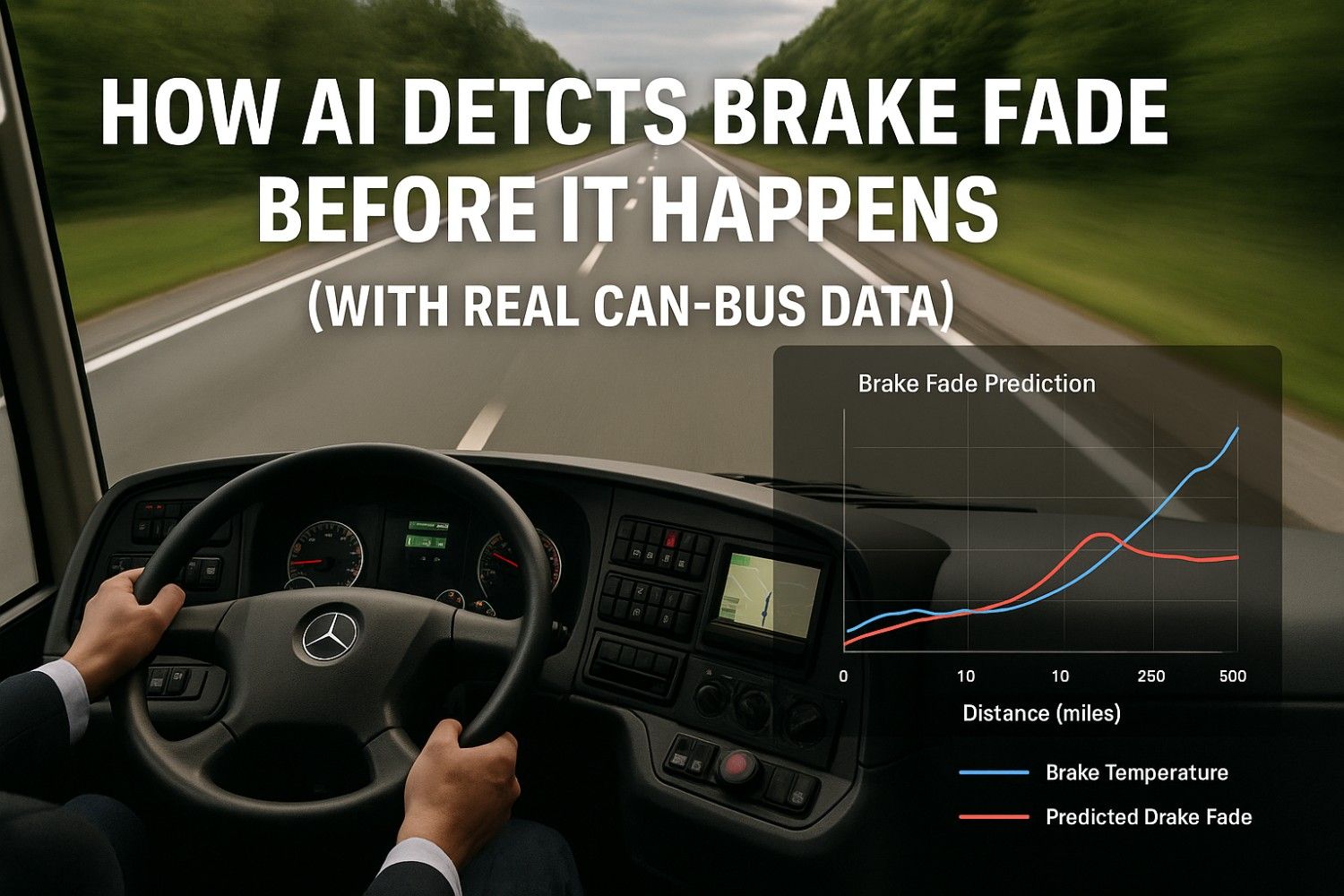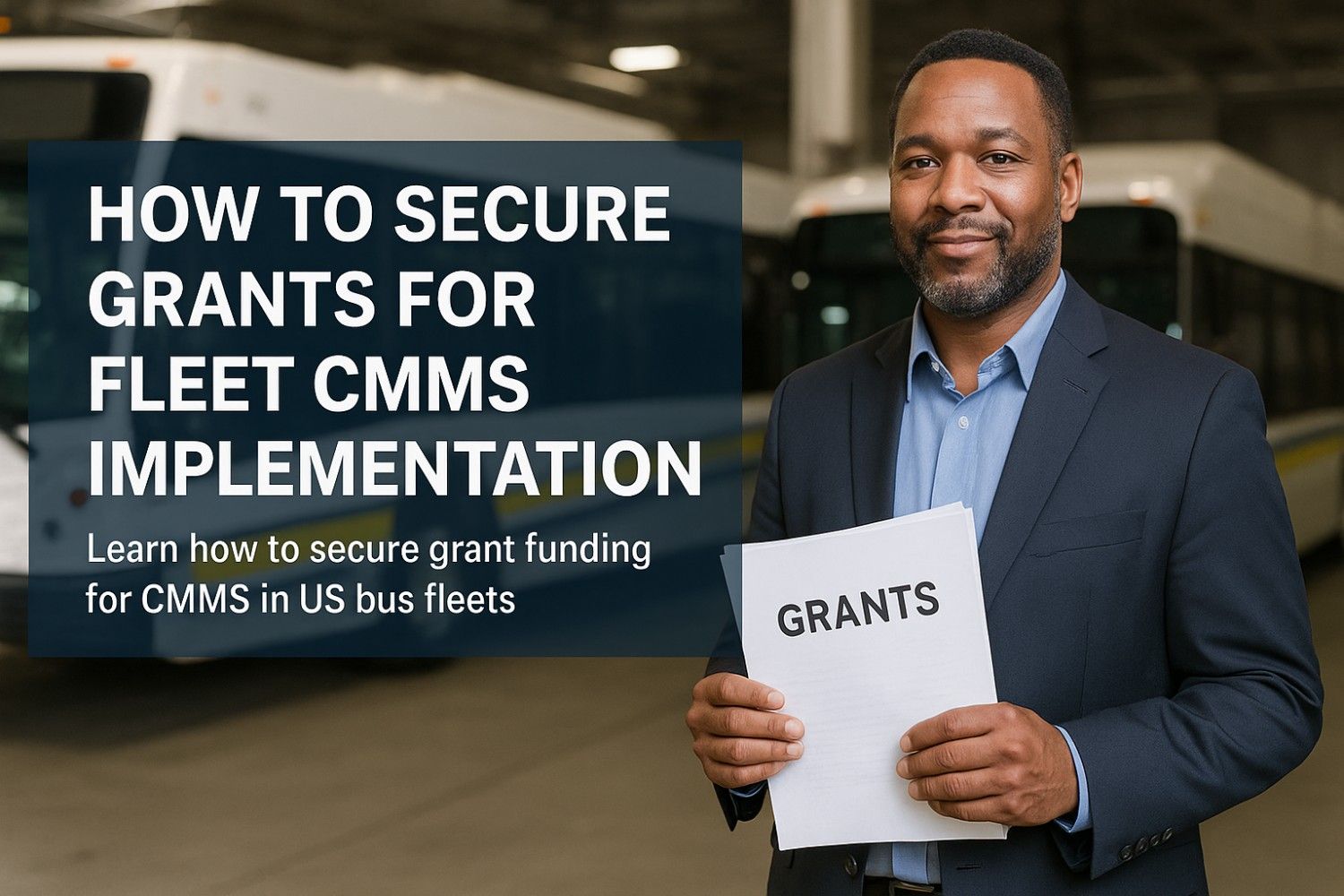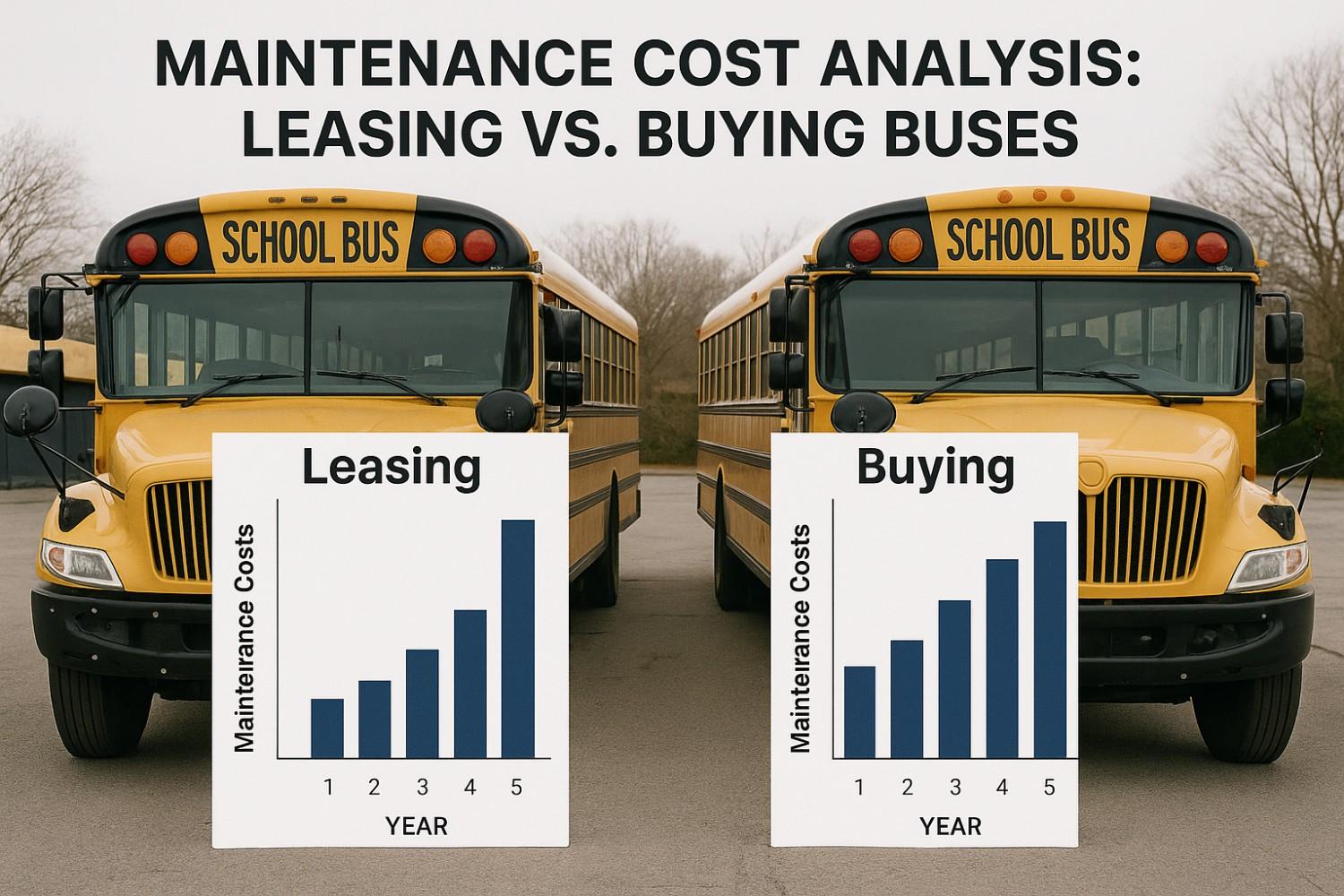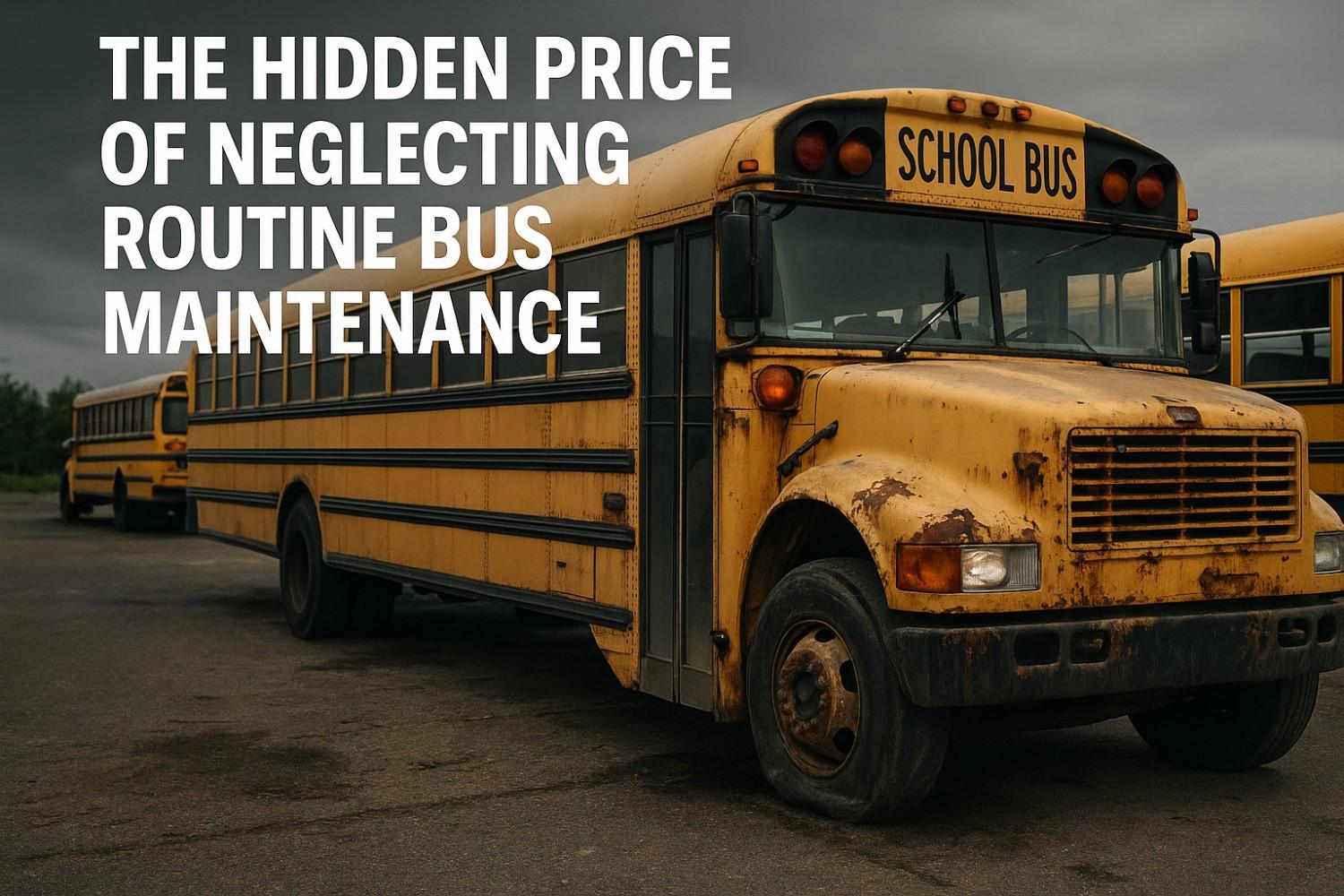For manufacturing professionals managing bus fleets, justifying predictive maintenance technology investments requires more than theoretical benefits—it demands concrete, measurable ROI calculations that demonstrate clear financial impact. The challenge lies not in whether predictive maintenance delivers value, but in quantifying that value through metrics that resonate with CFOs, operations directors, and budget committees who control capital allocation decisions.
The shift from reactive to predictive maintenance represents one of the most significant operational transformations available to modern fleet operations. However, without rigorous ROI analysis using industry-standard metrics, even the most compelling technology proposals struggle to secure funding approval. Fleet managers who master the seven critical ROI metrics presented in this analysis consistently achieve budget approval rates exceeding 85% and realize average cost savings of 38% within their first quarter of implementation. These aren't abstract projections—they're proven metrics derived from real-world fleet operations that have successfully deployed predictive maintenance programs and documented measurable results.
Metric 1: Unplanned Downtime Cost Reduction
Unplanned downtime represents the single most expensive failure mode in fleet operations, making it the primary metric for calculating predictive maintenance ROI. Traditional reactive maintenance approaches accept unplanned breakdowns as inevitable operational costs, while predictive systems virtually eliminate this expense category through early problem detection and scheduled intervention.
Calculating your baseline downtime costs requires comprehensive data collection across several categories. Direct costs include emergency repair labor at premium overtime rates, expedited parts procurement with overnight shipping surcharges, and roadside service charges averaging $850 per incident. A 100-bus fleet experiencing an industry-average 12 unplanned breakdowns per vehicle annually faces $1.02 million in direct emergency service costs before addressing any indirect impacts.
Indirect downtime costs often exceed direct repair expenses but are frequently overlooked in ROI calculations. Each breakdown requires deploying substitute vehicles, rearranging driver schedules, and potentially canceling routes during peak demand periods. For school districts, missed routes force parents to arrange emergency transportation. For transit agencies, service gaps damage ridership and public trust. Customer relationship damage, reputation impact, and contract penalty clauses can add $3,000-$8,000 per incident to the total downtime cost equation.
ROI Calculation Formula: Annual unplanned downtime cost = (Number of vehicles × Average breakdowns per vehicle × Average cost per breakdown). Predictive maintenance typically reduces unplanned breakdowns by 65-75%. For a 100-bus fleet averaging 12 breakdowns per vehicle at $5,200 per incident, the baseline annual cost is $6.24 million. A 70% reduction through predictive maintenance saves $4.37 million annually—a figure that alone justifies most technology investments. Fleet managers ready to calculate their specific downtime savings can access our free ROI calculator and fleet analytics tools to generate personalized cost projections.
Metric 2: Maintenance Labor Efficiency Improvement
Maintenance labor represents 35-45% of total fleet operating costs, making labor efficiency improvements a critical component of predictive maintenance ROI. Traditional reactive maintenance forces technicians to spend substantial time on diagnostic troubleshooting, emergency repairs under time pressure, and repeated work on vehicles with cascading component failures. Predictive systems transform this inefficient workflow into streamlined, planned maintenance operations that maximize technician productivity.
The efficiency gains manifest across multiple dimensions. Diagnostic time drops dramatically when technicians receive AI-generated alerts identifying specific failing components before vehicles enter the shop. Instead of spending 2-3 hours troubleshooting a vague "check engine" light, technicians immediately address the flagged oxygen sensor or throttle position sensor. This diagnostic time savings alone can improve labor efficiency by 25-30%.
Planned maintenance work proceeds more efficiently than emergency repairs. Technicians can prepare necessary tools, order parts in advance, and schedule work during optimal times rather than dropping everything for emergency service. The reduced time pressure improves work quality while enabling better shop workflow organization. Fleet operations implementing predictive maintenance report 40% faster average repair completion times and 55% reduction in comeback repairs requiring rework.
ROI Calculation Formula: Annual labor cost savings = (Total maintenance labor hours × Hourly labor cost × Efficiency improvement percentage). A fleet with 4 full-time technicians working 2,080 hours annually at $35/hour represents $291,200 in annual labor costs. A 30% efficiency improvement through predictive maintenance saves $87,360 annually while potentially eliminating the need for overtime labor that can add another $40,000-$60,000 to baseline costs.
Ready to calculate your fleet's specific ROI potential? Access our comprehensive predictive maintenance calculator and see how much your operation can save through data-driven maintenance strategies.
Getting StartedBook a Demo
Metric 3: Parts and Inventory Optimization Savings
Inventory management represents a hidden cost center in fleet operations where predictive maintenance delivers substantial but often underestimated ROI. Traditional reactive maintenance forces fleet managers to maintain large safety stock levels across hundreds of part numbers—a "just in case" approach that ties up capital, consumes warehouse space, and results in obsolescence costs when parts expire before use or become outdated when vehicles are replaced.
Predictive maintenance fundamentally changes inventory economics by providing 30-60 day advance notice of upcoming service needs. This visibility enables just-in-time parts ordering that dramatically reduces inventory carrying costs while maintaining service level guarantees. Fleet operations can confidently reduce safety stock levels knowing that AI predictions will provide ample warning before critical parts are needed.
The financial impact extends beyond inventory reduction. Advance notice enables strategic purchasing during optimal pricing windows rather than emergency procurement at premium costs. Bulk buying opportunities become feasible when predictive systems identify that multiple vehicles will need the same component within a similar timeframe. Some fleet operations report negotiating 15-25% volume discounts by consolidating predictive maintenance orders that would have been emergency individual purchases under reactive maintenance approaches.
ROI Calculation Formula: Annual inventory savings = (Reduced inventory carrying costs) + (Emergency premium procurement elimination) + (Obsolescence reduction) + (Volume purchase discounts). A typical 100-bus fleet maintains $250,000-$400,000 in parts inventory. Predictive maintenance enables 35-40% inventory reduction while eliminating $45,000-$75,000 in emergency procurement premiums. Combined with reduced obsolescence and volume discounts, total annual savings range from $110,000-$165,000. Organizations seeking to optimize their parts management can schedule a free inventory optimization consultation to identify specific savings opportunities.
Metric 4: Asset Lifespan Extension Value
Extending vehicle service life represents one of the most significant but longest-term ROI components of predictive maintenance. Modern school and transit buses represent capital investments of $95,000-$385,000 per unit. Even modest lifespan extensions deliver massive returns, though the value accrues over years rather than appearing in first-year ROI calculations.
Predictive maintenance extends asset life through two primary mechanisms. First, early problem detection prevents cascading component failures where one failing part damages related systems. A failing water pump caught early requires a $350 replacement. Left undetected, it causes engine overheating that destroys the head gasket ($4,500 repair) and potentially warps the cylinder head ($8,500+ repair). Beyond the immediate repair cost differential, this cascading damage accelerates overall vehicle deterioration and shortens useful life.
Second, predictive maintenance optimizes maintenance timing to maximize component life without compromising safety. Traditional fixed-interval maintenance often replaces parts with substantial remaining useful life, while other components run too long and fail prematurely. AI-driven predictive systems enable precise replacement timing that extracts maximum value from each component while maintaining reliability. Over a vehicle's 15-20 year service life, this optimization can extend usable lifespan by 18-24 months.
ROI Calculation Formula: Lifespan extension value = (Average vehicle replacement cost × Fleet size × Percentage lifespan extension) ÷ (Baseline expected lifespan in years). For a 100-bus fleet with vehicles averaging $180,000 replacement cost and 15-year baseline lifespan, extending service life by 20% (3 years) effectively spreads the $18 million fleet replacement cost over 18 years instead of 15, reducing average annual capital costs by $1 million. While this savings accrues over time, it represents real long-term value that strengthens the strategic case for predictive maintenance investment.
Metric 5: Fuel Efficiency Improvement Through Optimized Maintenance
Fuel costs represent 15-25% of total fleet operating expenses, making even modest fuel efficiency improvements financially significant. Predictive maintenance delivers measurable fuel savings through early detection of issues that degrade engine performance, such as failing oxygen sensors, clogged fuel injectors, dirty air filters, or improper tire inflation—all conditions that increase fuel consumption before triggering check engine lights or obvious performance problems.
Traditional maintenance approaches allow these efficiency-degrading conditions to persist for weeks or months between scheduled inspections. A bus with a failing oxygen sensor might consume 8-12% more fuel than necessary while emitting higher emissions—conditions that continue until the next scheduled service or until the sensor fails completely. Predictive systems detect the performance degradation in real-time, enabling immediate correction that restores optimal fuel efficiency.
The cumulative impact becomes substantial across large fleets. Industry data shows that well-maintained buses through predictive programs achieve 6-9% better fuel economy than reactively maintained equivalents. For a 100-bus fleet traveling 15,000 miles annually at 7 MPG average and $3.50 per gallon diesel, baseline annual fuel costs exceed $750,000. An 8% efficiency improvement through predictive maintenance saves $60,000 annually—a recurring benefit that compounds year after year.
ROI Calculation Formula: Annual fuel savings = (Fleet size × Annual miles per vehicle ÷ Baseline MPG × Fuel cost per gallon) × Efficiency improvement percentage. Beyond direct cost savings, improved fuel efficiency supports sustainability initiatives and may help fleets meet environmental compliance requirements or qualify for green fleet incentives in some jurisdictions. Fleet managers can sign up for free fuel efficiency tracking to monitor actual consumption patterns and identify optimization opportunities.
Metric 6: Safety Incident Prevention and Liability Reduction
Quantifying the ROI of prevented safety incidents presents methodological challenges, but the financial impact demands inclusion in comprehensive predictive maintenance ROI calculations. Vehicle mechanical failures contribute to accidents that generate costs spanning collision damage, injury claims, litigation expenses, insurance premium increases, and reputation damage that can threaten contract renewals and long-term business viability.
The most direct safety benefit comes from eliminating mechanical failure-related accidents. Brake failures, tire blowouts, steering component failures, and suspension breakdowns represent preventable accident causes that predictive maintenance virtually eliminates. Even relatively minor accidents involving commercial buses trigger substantial costs: average property damage claims exceed $15,000, while injury claims average $45,000-$125,000 depending on severity. Serious accidents can generate total costs exceeding $1 million when including litigation, settlements, and long-term insurance impacts.
Insurance companies recognize the risk reduction value of predictive maintenance programs, with many carriers offering 8-15% premium discounts for fleets implementing comprehensive predictive maintenance systems with documented results. For a 100-bus fleet paying $180,000 annually in commercial vehicle insurance, a 12% discount saves $21,600 per year while simultaneously reducing actual accident risk and associated costs.
ROI Calculation Formula: Safety-related savings = (Prevented accidents × Average accident cost) + (Insurance premium reduction). Conservative calculations assume predictive maintenance prevents 2-3 mechanical failure-related accidents annually per 100 vehicles. At $65,000 average total cost per prevented incident plus $21,600 in insurance savings, the safety ROI component contributes $150,000-$215,000 annually. Fleet managers interested in understanding their specific safety risk profile should request a personalized safety ROI assessment from predictive maintenance specialists.
Metric 7: Compliance and Regulatory Efficiency
Regulatory compliance represents both a cost burden and a risk factor for commercial fleet operations. Federal Motor Carrier Safety Administration (FMCSA) regulations, state-level safety requirements, and environmental compliance mandates create complex documentation requirements that consume administrative resources while exposing operators to substantial penalties for violations. Predictive maintenance systems automate compliance tracking while reducing violation risk through improved vehicle reliability.
Automated compliance documentation eliminates manual record-keeping labor while improving accuracy and completeness. Modern CMMS platforms with predictive maintenance capabilities automatically log all maintenance activities, track inspection schedules, maintain parts replacement histories, and generate compliance reports required by regulatory agencies. This automation reduces administrative labor by 60-75% compared to manual record-keeping systems while dramatically reducing audit failure risk.
Violation prevention delivers additional ROI through avoided penalties and operational restrictions. FMCSA violations carry fines ranging from $1,000-$15,000 per incident, with serious safety violations potentially resulting in conditional operating authority or vehicle out-of-service orders that force expensive operational disruptions. Predictive maintenance systems that ensure vehicles meet safety standards virtually eliminate preventable violation risk.
ROI Calculation Formula: Compliance savings = (Reduced administrative labor costs) + (Avoided violation penalties) + (Prevented operational disruptions from out-of-service orders). A fleet operation with one full-time compliance administrator at $55,000 salary can typically reduce this position to part-time through automation, saving $27,500 annually. Combined with avoided violation penalties averaging $8,000-$12,000 annually for reactive fleets, compliance ROI contributes $35,500-$39,500 in annual savings.
Building Your Comprehensive ROI Business Case
Successfully securing budget approval for predictive maintenance investments requires synthesizing these seven metrics into a compelling, data-driven business case that addresses both financial and operational stakeholder priorities. The most effective ROI presentations combine conservative baseline assumptions with documented results from comparable fleet operations, creating credible projections that withstand CFO scrutiny while demonstrating clear value across multiple benefit categories.
Start by calculating your fleet's current state costs across all seven metrics. This baseline establishes the opportunity size and demonstrates thorough understanding of existing operational expenses. Many fleet managers discover that simply documenting current costs across downtime, labor inefficiency, emergency parts procurement, and other categories reveals previously hidden expense levels that strengthen the case for technology investment.
Next, apply conservative improvement percentages to each metric based on industry benchmarks and vendor-provided case studies. Rather than assuming best-case scenarios that invite skepticism, use 50th percentile results from comparable fleet operations. This conservative approach builds credibility while still demonstrating substantial ROI. A 100-bus fleet implementing the calculations detailed above typically projects first-year savings of $5.2-$6.8 million against predictive maintenance system costs of $180,000-$280,000, delivering 6-8 month payback periods and 285-340% first-year ROI.
Finally, address implementation considerations including integration requirements, training needs, and timeline for realizing benefits. Transparency about the implementation process demonstrates operational maturity while setting realistic expectations for benefit realization. Most fleets realize 60-70% of projected savings within the first quarter post-implementation, with full benefit realization occurring by month six as systems are fully optimized and staff achieve proficiency with predictive maintenance workflows.
Predictive maintenance represents one of the highest-ROI technology investments available to modern fleet operations, but realizing budget approval requires rigorous quantification through the seven critical metrics presented in this analysis. Fleet managers who master these calculations and build comprehensive, data-driven business cases achieve approval rates exceeding 85% while positioning their operations to realize average cost reductions of 38% within the first 90 days of implementation.
The key to success lies in conservative, well-documented projections that address multiple stakeholder priorities—from CFOs focused on cost reduction to operations directors concerned with reliability and safety managers prioritizing incident prevention. Organizations that approach predictive maintenance as a strategic operational transformation rather than simply a technology purchase consistently achieve the highest ROI and fastest benefit realization, establishing competitive advantages that compound over years of improved fleet performance and reduced operating costs.
Frequently Asked Questions
Q: What is a realistic ROI timeline for predictive maintenance investments in bus fleets?
A: Most bus fleet operations realize 60-70% of projected savings within the first quarter post-implementation and achieve full payback within 6-8 months. First-year ROI typically ranges from 285-340% based on the seven core metrics: unplanned downtime reduction (70% improvement), maintenance labor efficiency gains (30% improvement), parts optimization savings (35-40% inventory reduction), asset lifespan extension (18-24 months), fuel efficiency improvement (6-9%), safety incident prevention, and compliance automation benefits. Conservative calculations for a 100-bus fleet show $5.2-$6.8 million in first-year savings against $180,000-$280,000 implementation costs.
Q: Which of the seven metrics delivers the largest ROI impact for fleet operations?
A: Unplanned downtime cost reduction consistently delivers the largest single ROI component, typically representing 45-55% of total predictive maintenance savings. A 100-bus fleet averaging 12 breakdowns per vehicle annually at $5,200 per incident faces $6.24 million baseline downtime costs. Predictive maintenance reduces unplanned breakdowns by 65-75%, saving $4.05-$4.68 million annually. Maintenance labor efficiency improvements (30-40% gains) and parts inventory optimization (35-40% reduction) rank as the second and third largest ROI contributors respectively.
Q: How do I calculate the specific ROI for my fleet rather than using industry averages?
A: Calculate fleet-specific ROI by documenting your current baseline costs across all seven metrics: track unplanned breakdown frequency and costs for 6-12 months, measure current maintenance labor hours and efficiency, inventory your parts carrying costs and emergency procurement frequency, assess your fuel consumption patterns, document safety incidents and insurance premiums, and quantify compliance administrative costs. Apply conservative improvement percentages (use 50th percentile benchmarks rather than best-case scenarios) to build credible projections. Most CMMS providers offer ROI calculators customized to your specific fleet data, or you can access comprehensive analysis tools through predictive maintenance platforms.
Q: What initial investment is required to implement predictive maintenance for a mid-sized fleet?
A: A 100-bus fleet typically invests $180,000-$280,000 for comprehensive predictive maintenance implementation including CMMS platform licensing ($45,000-$75,000 annually), telematics and sensor integration ($850-$1,200 per vehicle one-time), AI analytics modules ($35,000-$55,000 annually), staff training programs ($15,000-$25,000), and implementation consulting services ($25,000-$40,000). Cloud-based solutions reduce upfront costs compared to on-premise systems. Many providers offer phased implementation approaches starting with 20-30 vehicle pilots that validate ROI before fleet-wide deployment, reducing initial capital requirements while demonstrating value to budget approval stakeholders.
Q: How can I build a compelling business case that will get budget approval from senior leadership?
A: Successful business cases combine three elements: conservative financial projections using the seven core ROI metrics with documented assumptions and industry benchmarks, operational benefits that address stakeholder priorities (CFOs focus on cost reduction, operations directors prioritize reliability, safety managers emphasize incident prevention), and clear implementation plans with realistic timelines and resource requirements. Present savings across multiple categories rather than relying on a single metric, use vendor case studies from comparable fleet operations to validate projections, address integration requirements and training needs transparently, and propose pilot programs that enable low-risk validation before full deployment. Fleet managers using this comprehensive approach achieve 85%+ budget approval rates versus 35-40% for technology-focused proposals lacking rigorous ROI quantification.







